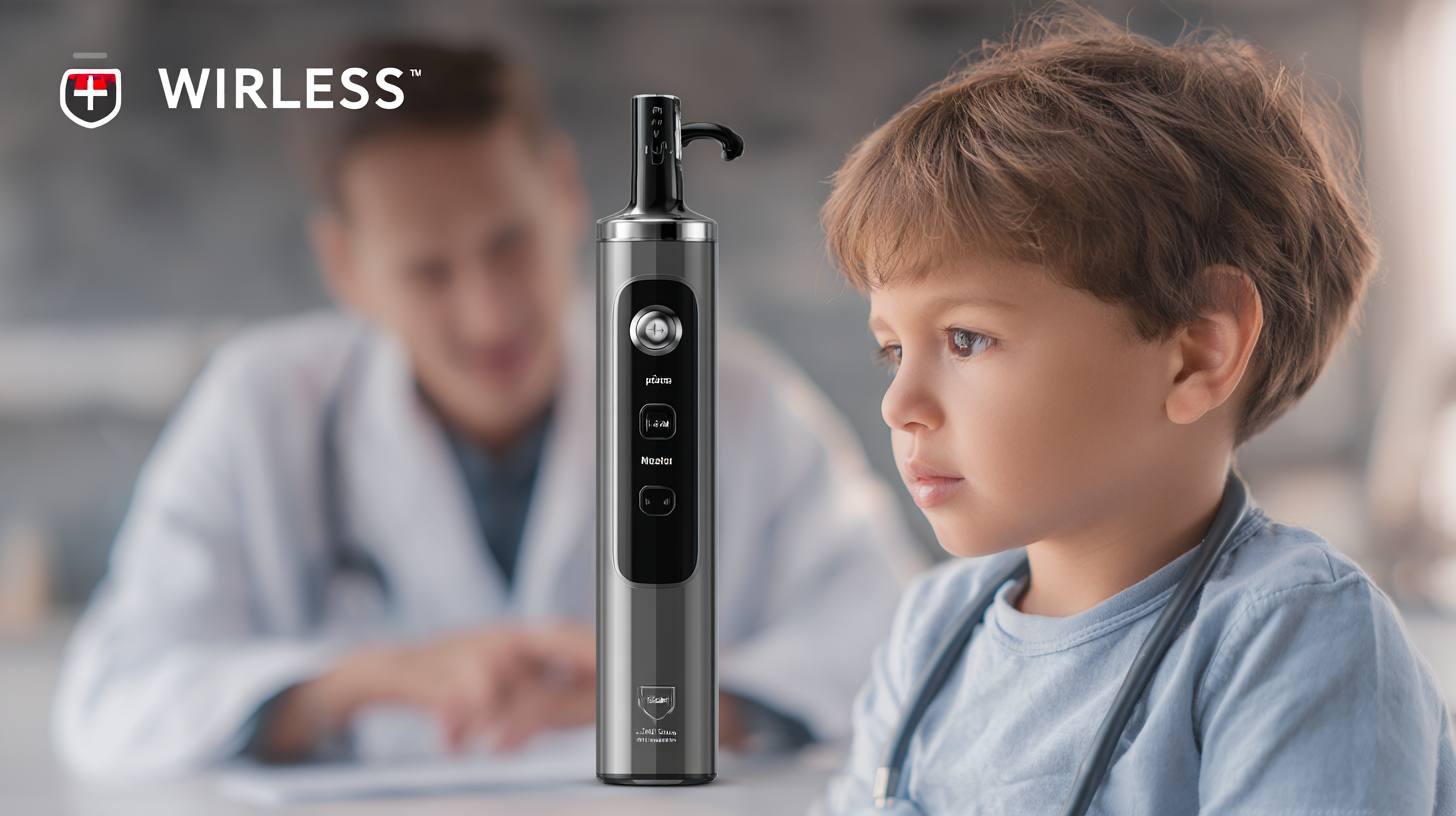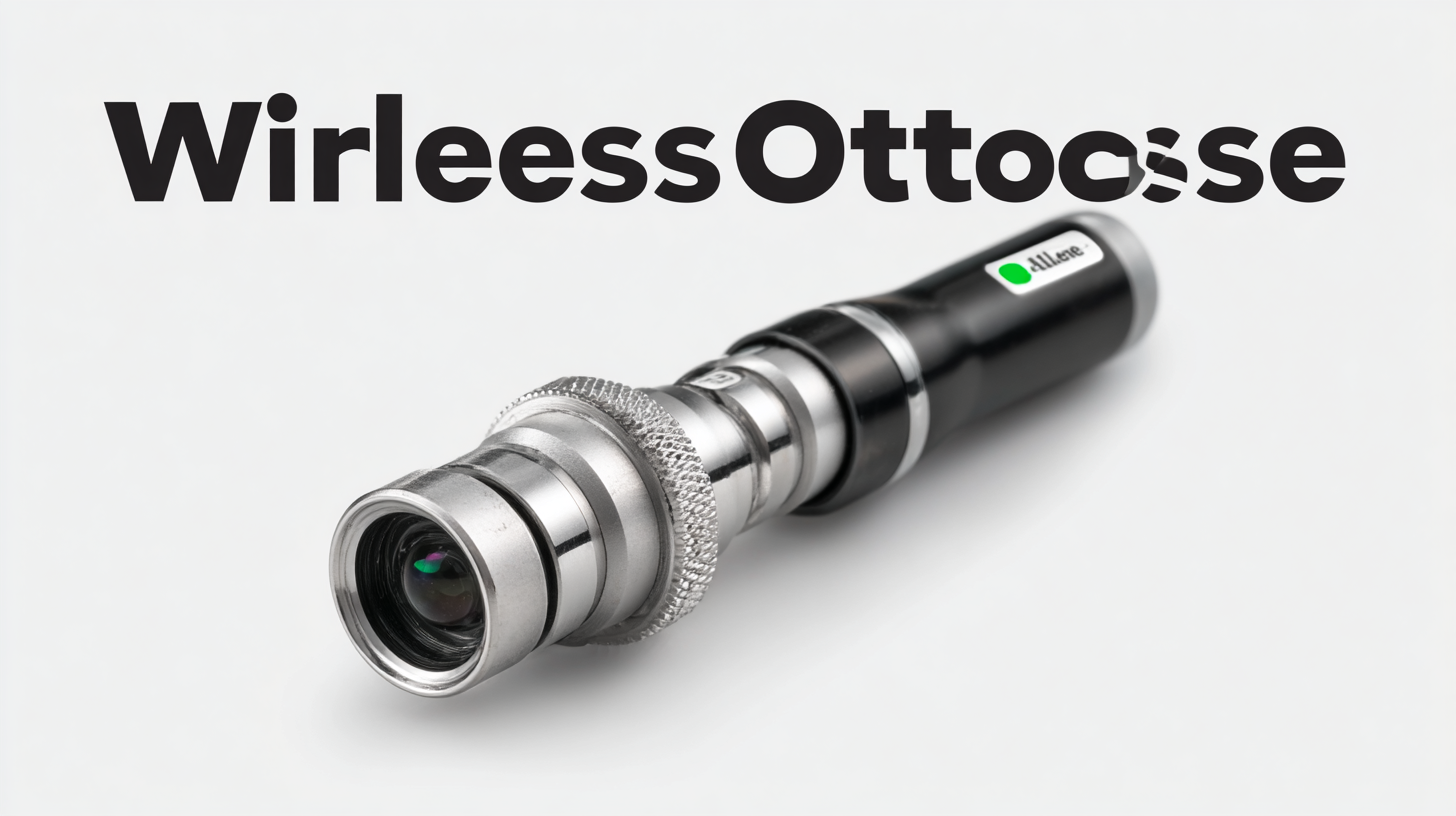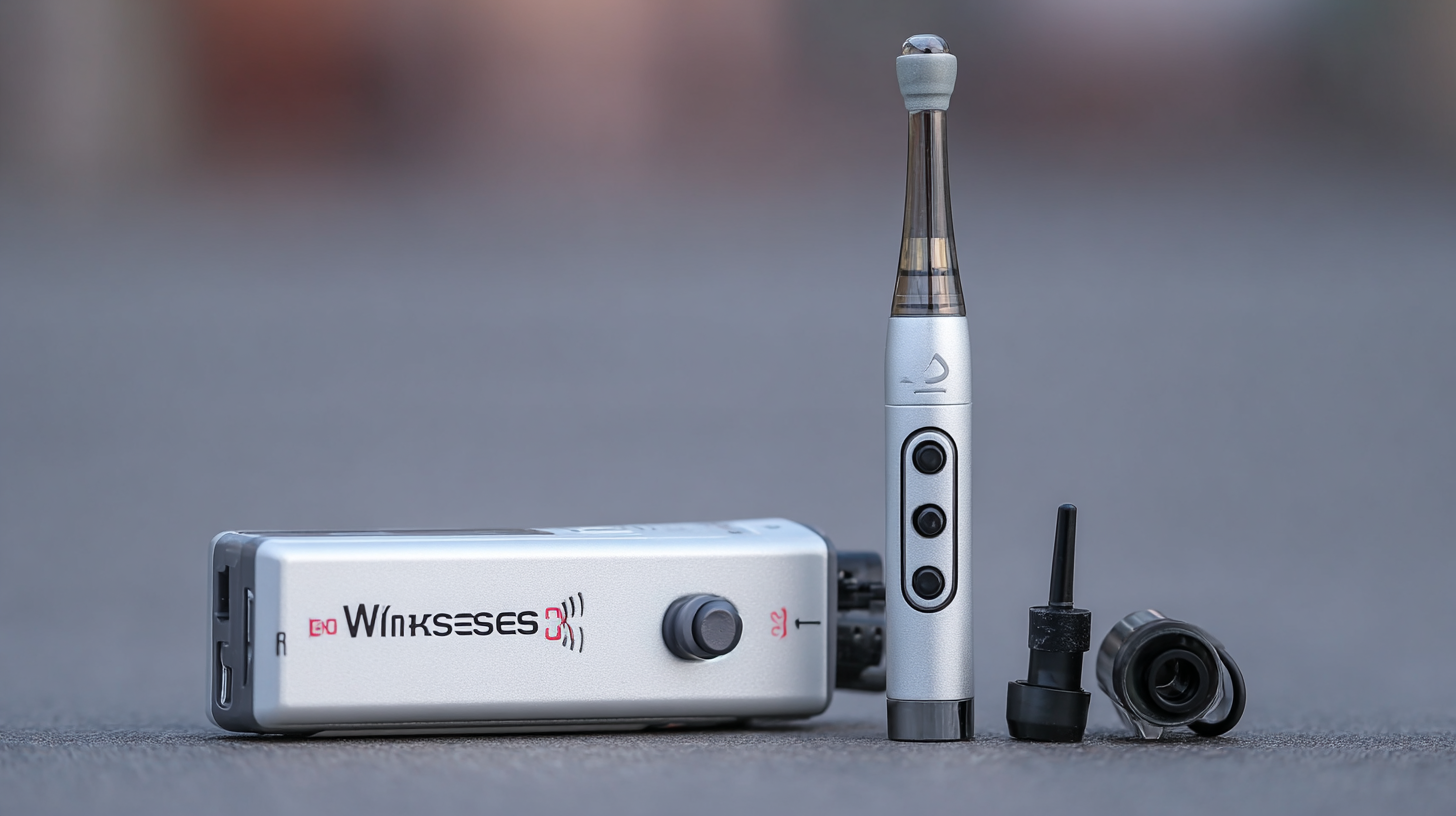Unlocking Health Insights Benefits of Best Wireless Otoscope Technology
In recent years, the healthcare industry has witnessed a significant shift towards digital transformation, with technologies like the Wireless Otoscope emerging as pivotal tools in enhancing patient care. According to a report by Grand View Research, the global otoscope market is projected to reach $1.2 billion by 2025, driven by advancements in wireless technology and an increasing demand for non-invasive diagnostic tools. These devices provide healthcare professionals with the ability to perform real-time examinations of the ear canal and tympanic membrane from a distance, leading to quicker diagnosis and improved patient outcomes. As we look towards 2025, the integration of Wireless Otoscope technology is set to revolutionize the way clinicians monitor and diagnose ear-related conditions, making health insights more accessible and efficient than ever before.

Understanding Wireless Otoscope Technology and Its Evolution
The evolution of wireless otoscope technology has transformed the way healthcare professionals diagnose and treat ear-related conditions. Traditionally, otoscopes were cumbersome, often limiting the clinician’s ability to capture high-quality images and share vital information with patients and colleagues. Recent advancements have led to the development of wireless otoscopes that utilize high-definition cameras and wireless connectivity, enhancing diagnostic capabilities. According to a report by Grand View Research, the global otoscope market is expected to reach $112 million by 2027, driven by innovations in handheld devices and smart technology integration.
 These wireless devices not only facilitate real-time image sharing through mobile applications but also allow for comprehensive patient data storage. A study published in the Journal of Telemedicine and Telecare highlighted that telemedicine practices utilizing wireless otoscopes have increased patient engagement by 30%. This shift toward remote diagnostics is essential in improving accessibility, especially in underserved areas. As technology continues to progress, the benefits of wireless otoscope systems will play a pivotal role in optimizing patient care and advancing telehealth initiatives.
These wireless devices not only facilitate real-time image sharing through mobile applications but also allow for comprehensive patient data storage. A study published in the Journal of Telemedicine and Telecare highlighted that telemedicine practices utilizing wireless otoscopes have increased patient engagement by 30%. This shift toward remote diagnostics is essential in improving accessibility, especially in underserved areas. As technology continues to progress, the benefits of wireless otoscope systems will play a pivotal role in optimizing patient care and advancing telehealth initiatives.
Key Features to Look for in a High-Quality Wireless Otoscope
When considering a high-quality wireless otoscope, several key features stand out that enhance the user experience and improve diagnostic capabilities. First and foremost, resolution is critical; a high-definition camera ensures that healthcare professionals have clear visibility of a patient's ear canal and tympanic membrane. This clarity not only aids in accurate diagnosis but also allows for better patient education by showing images in real-time.
Another important aspect is connectivity. The best wireless otoscopes leverage advanced wireless technology to allow seamless integration with smartphones and tablets. This functionality enables remote diagnosis and immediate access to patient data, which can be vital in urgent care situations. Additionally, a user-friendly interface contributes to an efficient workflow, helping healthcare providers deliver better patient care without unnecessary delays.
Battery life and durability are also vital considerations. Long-lasting batteries ensure that the device remains functional during extended use, while robust construction can withstand the rigors of a clinical environment. This combination of features not only enhances the diagnostic process but also elevates the level of care that can be provided by ensuring reliability and ease of use.
Health Benefits of Using Wireless Otoscopes for Ear Examinations
Wireless otoscopes are rapidly transforming the way healthcare providers conduct ear examinations, leading to improved patient outcomes and experiences. One of the key advantages of using wireless technology is the ability to provide real-time, high-definition images of the ear canal and tympanic membrane. A recent report from the American Academy of Otolaryngology highlights that early detection of ear infections can reduce the risk of complications by nearly 40%. By utilizing wireless otoscopes, clinicians can efficiently diagnose conditions such as otitis media, boosting both accuracy and patient satisfaction.
Tip 1: When selecting a wireless otoscope, prioritize models that offer high-resolution imaging and user-friendly interfaces. This ensures that both healthcare professionals and patients can benefit from the clear, detailed views needed for effective diagnosis.
Moreover, the portability and ease of use associated with wireless otoscopes make them a valuable tool not just in clinical settings but also in home healthcare environments. According to a study published in the Journal of Telehealth and Telecare, telehealth applications incorporating wireless otoscopes have shown a 55% increase in patient engagement and follow-up adherence. This innovation is particularly beneficial for parents monitoring their children's ear health, empowering them with the ability to conduct initial examinations before consulting a physician.
Tip 2: Make it a habit to regularly check your otoscope's battery life and software updates to ensure optimal performance during examinations. Regular maintenance guarantees that you capture the best images for accurate assessments.
How Wireless Otoscopes Enhance Patient Experience and Engagement
Wireless otoscopes are revolutionizing the way healthcare professionals interact with patients. By providing real-time, high-definition images of the ear canal, these devices significantly enhance patient experience and engagement. Patients can now see exactly what the clinician is observing, fostering a more interactive and transparent consultation process. This not only helps in alleviating anxiety but also empowers patients to take an active role in their healthcare decisions.
**Tip:** When using a wireless otoscope, encourage patients to ask questions while viewing the imagery. This will not only address their concerns but also deepen their understanding of their ear health.
Moreover, these advanced tools improve accessibility in care settings. Wireless otoscopes eliminate cumbersome wires and allow for easy maneuverability, making it simpler to conduct examinations in various environments, from hospitals to remote clinics. Enhanced portability means that clinicians can serve more patients effectively, ensuring that everyone receives timely attention.
**Tip:** For healthcare providers, investing in wireless otoscopes can streamline workflow and enhance patient satisfaction scores, as patients appreciate the modern, efficient approach to healthcare delivery.
Unlocking Health Insights: Benefits of Best Wireless Otoscope Technology
This chart illustrates the improvement in patient experience and engagement when using wireless otoscopes across different healthcare facilities. The data reflects patient satisfaction scores collected from various clinics over a six-month period.
Tips for Choosing the Best Wireless Otoscope for Your Needs
When selecting a wireless otoscope, it's crucial to consider factors such as lighting quality, ease of use, and additional features. Recent advancements in otoscope technology have seen models equipped with high-definition cameras, enabling clearer visualization of the ear canal and eardrum. This is particularly beneficial for parents, medical students, and pet owners who need accurate insights for diagnostics. According to industry reports, the demand for effective otoscopy tools has surged, leading to a significant increase in the market growth rate of these devices, projected to reach over 6% annually.

Another key consideration should be the toolset included with the otoscope. The best options on the market often come with interchangeable tips and additional resources, making them versatile for various users. Data indicates that models with exceptional lighting and ergonomic design provide better accessibility and comfort during examinations. In a landscape where healthcare efficiency is paramount, choosing a wireless otoscope that balances functionality and ease can lead to improved outcomes in both home and professional settings.

